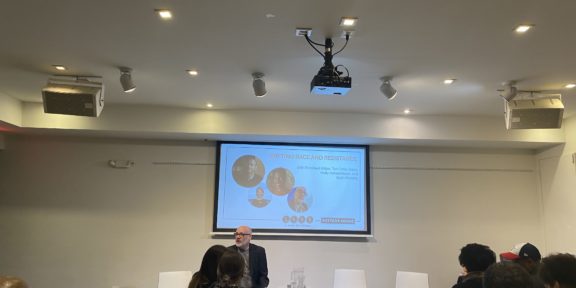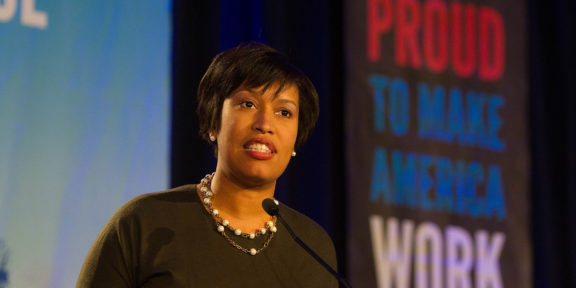By Kaylan Ware, Howard University News Service
Washington D.C.– In the midst of earned income tax credit (EITC) season, the staff and volunteers at D.C. Hunger Solutions are busy serving Washington, D.C. residents. Trained volunteers visit tax service locations to assist low-income residents, disabled residents and senior citizens with determining eligibility and applying for federal nutrition programs until the end of tax season.
Nonprofit organization D.C. Hunger Solutions has worked to end hunger in the Washington D.C. area since 2002. Though its main office is located in Ward 2, much of the city benefits from the organization’s work. The multi-part mission of the organization details the actions necessary to end hunger and maintain a city with accessible healthy food options.
Beverley Wheeler acts as the director of D.C. Hunger Solutions. As a trained policy analyst, Wheeler did not expect to be serving in the role she does today.
In 2010, the D.C. Council passed the Healthy Schools Act which required D.C. public schools and D.C. public charter schools to serve free breakfast to all students. The act also promoted the incorporation of more nutritious food and health education opportunities for students.
During this time, Wheeler worked as the president and CEO of City Center Public Charter Schools. This was her first encounter with D.C. Hunger Solutions.
Wheeler later found herself on the board of advisors for D.C. Hunger Solutions. The board of advisors listened to the organization’s strategic planning and provided feedback.
Roughly four years later, Wheeler is the director of D.C. Hunger Solutions.
One of D.C. Hunger Solutions’ many goals is to “educate people about the stark reality of hunger in the nation’s capital.”
“We really do believe that healthy food is a basic human right,” Wheeler said. “We help to continually bring that to the forefront.”
According to the organization’s website, “D.C. Hunger Solutions utilizes a three-pronged strategy to overcome barriers and create self-sustaining connections between city residents and nutritious food.”
Education of the community, participation in federal nutrition programs and policy work are the three initiatives in place guiding D.C. Hunger Solutions staff and volunteers towards the end of hunger in the nation’s capital.
“I fit into this mission by focusing on child nutrition and access to the child nutrition programs,” Paige Pokorney, D.C. Hunger Solutions anti-hunger program associate for Child Nutrition, said.
Pokorney works to “maximize participation” in programs that provide meals to children during and after school, over the summer as well as meals in early childcare centers and to women, infants and children (WIC).
D.C. Hunger Solutions advocates for the creation, implementation, enforcement and maintenance of these federal nutrition programs. WIC provides food and health services to women, infants and children, but in order for families to take full advantage of such programs, there needs to be access to such services within their communities.
The DC Food Policy Council passed the WIC Expansion Act of 2018, which “will make sure there are more small footprint stores that accept WIC in wards that need it,” Wheeler said.
D.C. Hunger Solutions uses outreach, education, policy, and advocacy to support such government programs, ensuring their usefulness and accessibility. These strategies help qualified residents receive the benefits of programs like the Supplemental Nutrition Assistance Program (SNAP) which provides low income households with Electronic Benefit Transfer (EBT) cards that can be used to purchase grocery items.
The hashtag #HandsOffSNAP has grown in popularity due to a rule proposed by the United States Department of Agriculture (USDA) under the Trump administration that would allow for a change in requirements. This change would prevent SNAP access to a number of D.C. residents previously eligible.
“The administration’s proposed rule will cause greater hunger and hardship if adopted,” Emily Pickren said.
Pickren, senior manager of communications for the Food Research & Action Center, also explained how the new proposal affects a state’s ability to effect SNAO as intended by Congress.
According to D.C. Hunger Solutions’ report “Closing the Grocery Store Gap in the Nation’s Capital,” in 2014, the lowest median household income in Washington was in Wards 7 and 8. Wards 7 and 8 are over 90 percent black.
In addition to housing most of Washington’s low-income population, the number of full-service grocery stores in 2016 was lowest in Wards 7 and 8.
The USDA would refer to those areas as food deserts. A food desert is defined as “ parts of the country vapid of fresh fruit, vegetables, and other healthful whole foods, usually found in impoverished areas,” according to the American Nutrition Association.
“Food Access Research Atlas (formerly Food Desert Locator)” is found on the USDA website. The update to this atlas’ title echoes Wheeler’s desire to have such areas accurately represented.
“[Food desert is] actually a very disparaging term,” she said. “People think of deserts as having nothing, and one of the things that we know is that these neighborhoods are thriving neighborhoods. They’re resourceful neighborhoods. They just have less resources than others.”
Wheeler refers to such areas as “less-resourced neighborhoods.”
“In many of those, their lack of resources is rooted in what many of us believe are racial inequities,” she said. “Policies and legislation that have led to that.”
“We aren’t just feeding people,” Pokorney said. “We are working to break down years of structural racism and poverty in underserved communities. Access to nutritious foods is just the first step.”
One factor in increasing and providing access to nutritious foods is public policy. Witnessing the passing of such policies that the organization advocated for excites Wheeler.
“When that happens, we know people are getting healthy meals,” she said.
They see the results of their work and commitment to ending hunger in Washington in things seemingly small like school lunch.
“Seeing how school meals have improved so much since I was in school is mind-blowing,” Pokorney said. “At an event for National School Lunch Week at a local public school, I saw kids enjoying healthy foods like fish tacos on whole wheat tortillas, cabbage slaw, and oranges. Shout out to DC Central Kitchen for preparing the meal. [I never] thought I’d see kids enjoying fish tacos made from locally sourced pollock.”
Wheeler and Pokorney celebrate small victories and enjoy seeing the impact of their work, but they also understand that there is more work to be done.
“We’re looking at ways to solve hunger, and I think as long as people understand that it is a solvable issue, and that we can work together to solve it, it will work,” Wheeler said.









